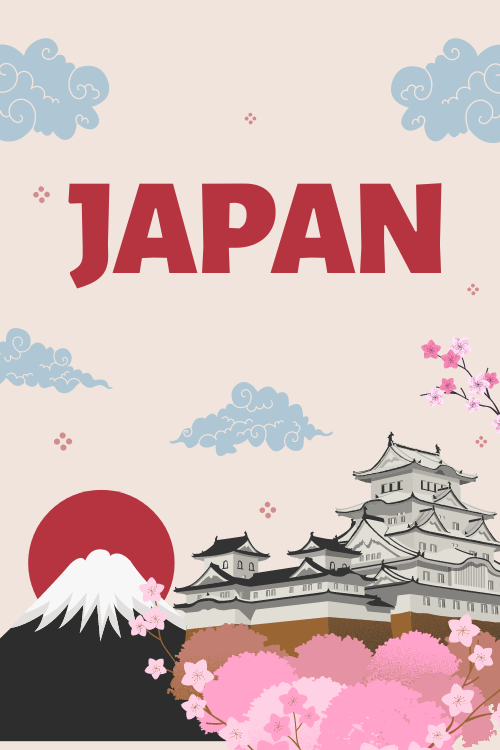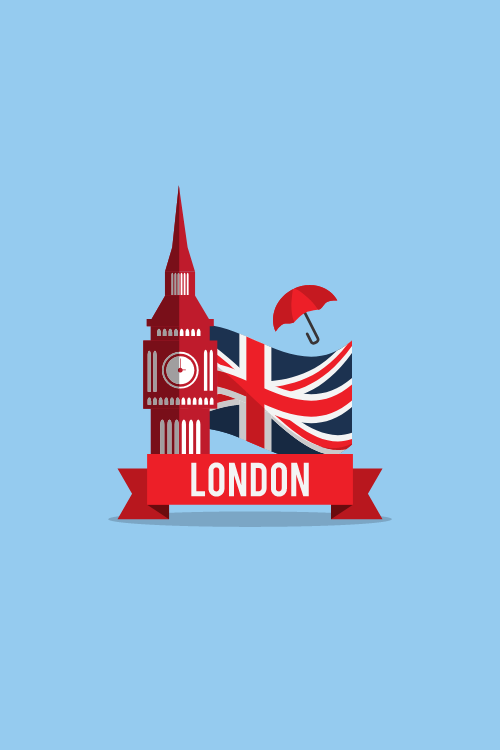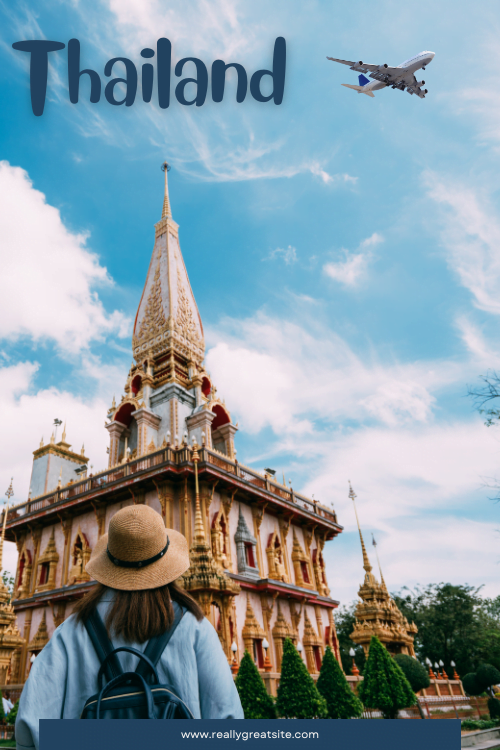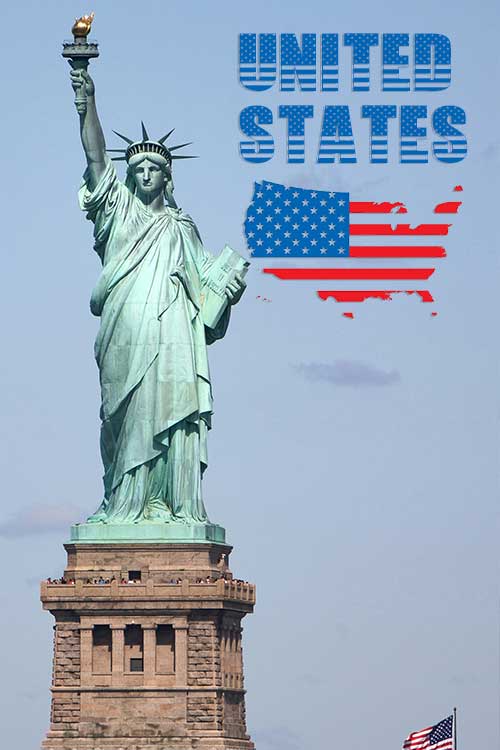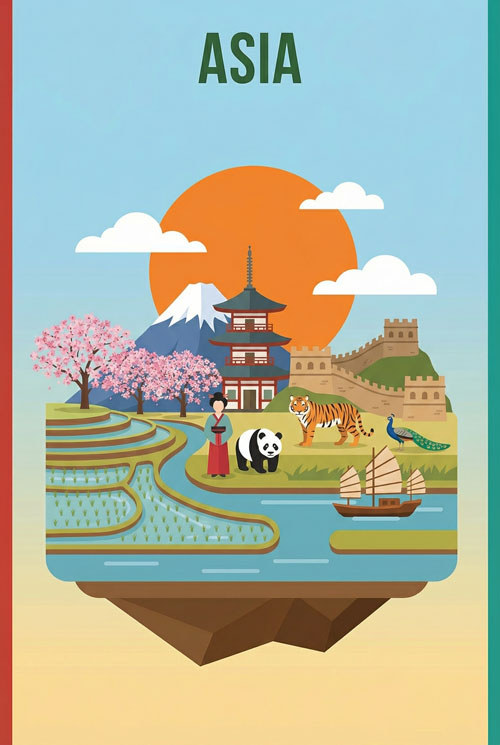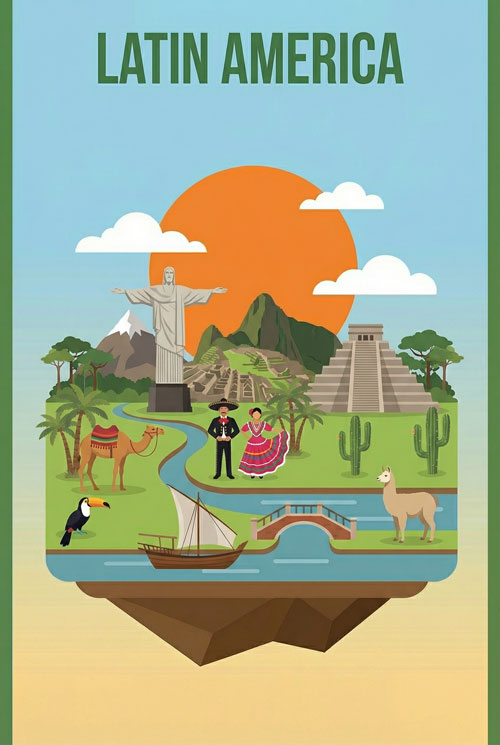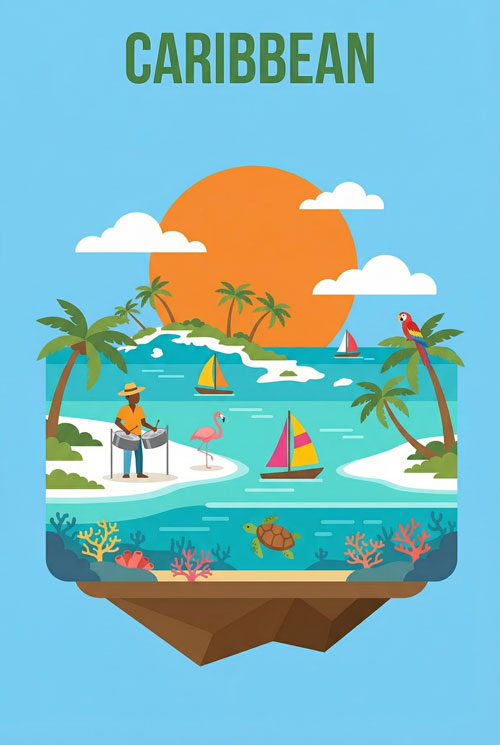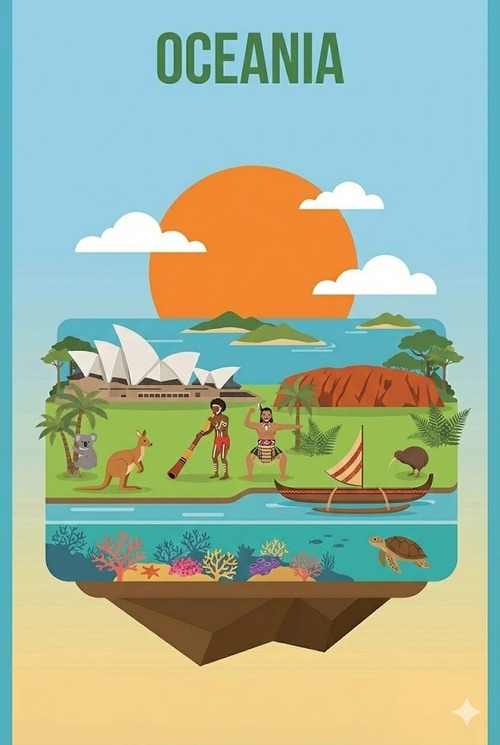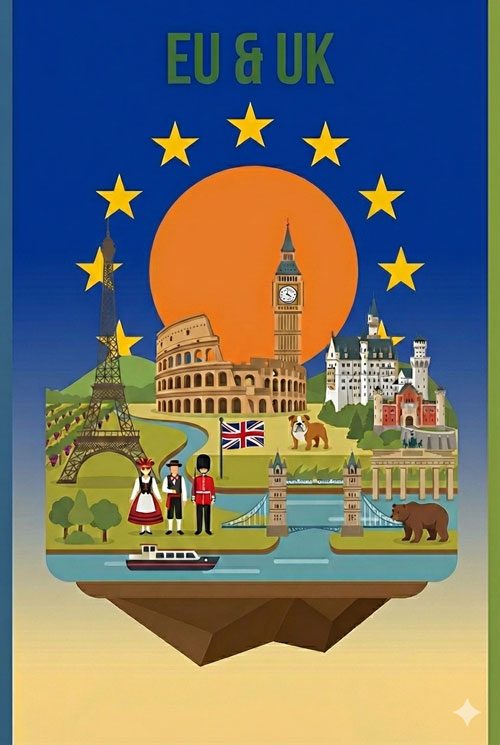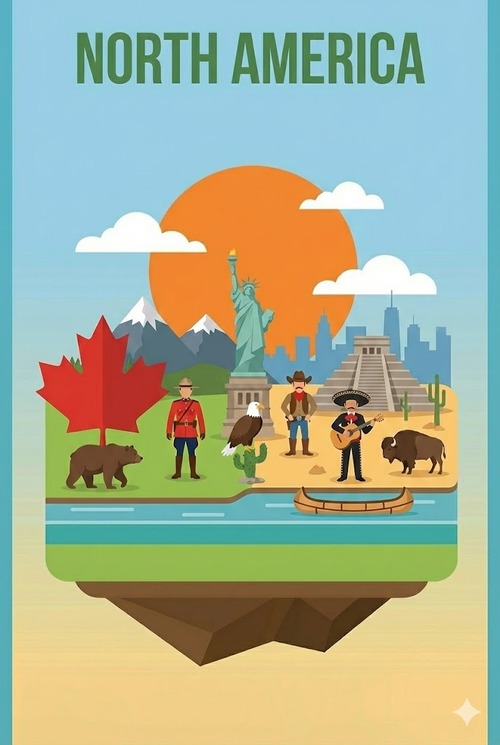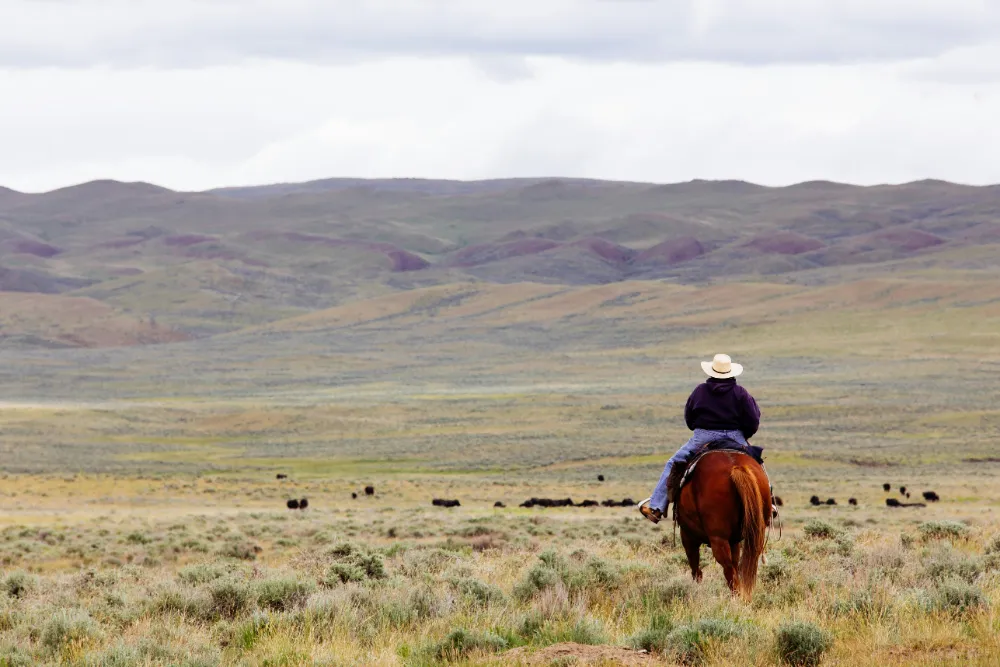Best Time To Visit, eSIM USA
When is the Best Time to Visit Montana? Full Guide & Quiz
When is the best time to visit Montana?
The answer is different for everyone.
It depends on what you want to do, how much you want to spend, if you mind crowds, and what kind of weather you like. This guide will tell you about Montana’s seasons. It will give you ideas for things to do and tips for different kinds of travelers. This will help you plan the best trip to Montana.
You will also find a “Montana Seasonal Activity & Conditions Matrix.” This chart will make it easier to choose when to visit. Montana offers many different things to see and do. Summers have long, sunny days with lots of color. Winters turn the state into a great place for skiing.
Understanding Montana’s Travel Seasons: A Quick Overview
To plan your trip well, it helps to know about Montana’s main travel times. Each one is different:
- High Seasons: These are usually Summer (June to August or early September) and Winter (December to March). This is when the weather is best for Montana’s top activities. In summer, you can hike and visit national parks. In winter, you can ski and snowboard. Because the weather is good, more people visit. This means prices for hotels and other things can be higher. Summer is warm and nice. Winter is great for snow fun.
- Shoulder Seasons: These are Spring (April to May or early June) and Fall (late September to November). During these times, there are fewer people. Prices for places to stay and things to do might be lower. The weather can change more. Some activities or places might be closed or have shorter hours as they get ready for the busy or slow season. But, “Big Sky Country” is much quieter then.
- Low Season: This isn’t as clearly set. But times like late November (after fall colors, before skiing) or early April (muddy, after skiing, before summer hiking) can be the low season. Some might say March to April is a low season. But March can be great for skiing and still popular for that. These times have the fewest crowds. But the weather can be very hard to predict, and fewer tourist spots may be open.
Many people find that the shoulder seasons, or the edges of the high seasons, are the best. They offer a good mix of nice weather, fewer crowds, and fair prices. We will talk more about this “sweet spot.”
Too busy to read the full guide? Try our quick quiz instead…
Find Your Perfect Montana Trip!
Answer a few questions to discover the best time for your Big Sky Country adventure.
1. What kind of atmosphere are you looking for in Montana?
2. How do you feel about crowds?
3. What’s your ideal weather for exploring Montana?
4. Which Montana activities are high on your to-do list?
Select up to 2 that are most important.
5. How important is budget in your planning?
Your Recommended Montana Trip Time:
Stay Connected in the USA with esim4.com!

Don’t let roaming charges spoil your Montana adventure. Get affordable and convenient eSIM data plans for the USA from esim4.com. Easy to set up, stay connected from the moment you land!
Explore USA eSIM PlansMontana, Season by Season: What to Expect and Best Things to Do
Each season in Montana is special. They all have different things to offer, like weather, fun activities, and sights. Knowing about these changes will help you match your trip to what you like.
Summer in Montana (June – August): The Season of Adventure
Overall Vibe: Summer in Montana is full of life. The days are long and sunny, perfect for lots of outdoor fun. Towns and nature spots are busy with people.
Weather: Expect warm to hot days. July is usually the hottest month. Highs can be over 80°F (27°C) and sometimes even 90°F (32°C). Evenings usually get cooler, which is nice. The weather can be different in different parts of the state. Mountains might be cooler than the flat areas in the east. June can be rainy, especially near places like Bozeman.
Top Activities & Why:
- Hiking & Backpacking: Summer is the best time for this. Most trails, especially high in the mountains, are clear of snow from late July. In early summer, you’ll see lots of wildflowers. Animals are active all summer. June to August is great for mountain trails. With less snow, you can reach more trails. Longer days mean more time to explore.
- National Parks (Yellowstone & Glacier): Summer is the main time to visit Montana’s famous national parks. All roads and visitor centers in Yellowstone and Glacier National Parks are usually open. This is the top season for road trips, especially to Yellowstone National Park. For Glacier National Park, late June to mid-September is best if you want to drive the Going-to-the-Sun Road and see different parts of the park.
- Water Activities: Rivers and lakes are popular for fun. You can go whitewater rafting, kayaking, fishing, or just float along. The Madison River is a favorite spot for tubing. You can find exciting whitewater rafting in late spring. But July, August, and September have rapids that are good for families on rivers like the Middle Fork Flathead.
- Festivals & Rodeos: Summer is when many towns have cultural events, music festivals, and old-fashioned rodeos. For example, Bozeman has the Sweet Pea Festival in August. It’s a big arts event.
Crowds: Summer has the most visitors. Montana can get almost 2.5 million visitors each month then. That’s about twice as many people as live in the state. So, popular places and trails can be crowded.
Prices: Because so many people visit, prices for hotels, flights, and some tours are highest. It’s a good idea to book far ahead, even for camping spots.
What to Pack (Briefly): Bring clothes you can layer. This helps you stay comfortable if the temperature changes. Sun protection (hat, sunglasses, sunscreen) is very important. A raincoat is a good idea, especially in June. And if you plan to hike, bring good hiking shoes.
Fall in Montana (September – November): Colors, Crisp Air, and Fewer Crowds
Overall Vibe: Fall changes Montana. The land turns golden. The air is fresh and cool. Trails and towns are quieter as the summer crowds leave. Animals are busy getting ready for winter. It’s a beautiful time for photos.
Weather: Days are often warm and sunny, especially in September. Evenings are cool and fresh. September is often called a perfect month. Temperatures can be in the low 70s in places like Bozeman. By mid-September, the leaves start to change color. October can have lovely “Indian summer” days with temperatures over 70°F (21°C). But it can also snow early, especially later in the fall and in the mountains.
Top Activities & Why:
- Hiking & Backpacking: The weather is often seen as perfect. Cooler temperatures are good for hard hikes. There are fewer bugs than in summer. The bright fall leaves make a beautiful background. Trails are much quieter after Labor Day. This means you can have a more peaceful hike. The clear, crisp mornings and nice daytime temperatures make September a top choice for hiking.
- Wildlife Viewing: Fall is a great time to see animals. The elk mating season, called the rut, is usually from September to mid-October. This is when male elk are more active and make loud calls. Animals are generally easier to see as they look for food before winter. The Yellowstone Fall Wildlife Festival in September is a good chance to see Montana’s animals.
- Photography: The mix of golden fall light, colorful leaves (from trees like aspen, cottonwood, and larch), and sometimes snow on the mountain peaks gives photographers amazing pictures.
- Hunting: Fall is a big hunting season for elk, deer, and other animals. If you are hiking in areas where people hunt, it’s important to wear bright colors to stay safe.
- Visiting Yellowstone/Glacier: These parks are still beautiful in the fall and have fewer people. But, some services, places to stay, and roads may start to close as the season goes on. This often happens from mid-September or October. Many say September to October is one of the best times to visit Yellowstone. There are fewer crowds, prices are lower, and you can have a more personal experience.
Crowds: Crowds get much smaller after Labor Day. Kids go back to school, and family trips end. This means you can explore popular spots more peacefully.
Prices: Hotel rates and other travel costs are usually lower than in summer. You can often find good deals.
What to Pack (Briefly): Layers are very important. The temperature can change a lot between warm days and cold nights or mornings. A warm jacket, clothes that block water and wind, gloves, and a hat are good ideas, especially later in the fall. If you go into areas where people hunt, wear bright clothes.
Winter in Montana (December – March): A Snow Lover’s Paradise
Overall Vibe: Winter covers Montana in a thick layer of snow. This makes the views amazing and creates a perfect place for people who love snow sports. Mountain towns often feel cozy and cheerful, with lots of activity around ski areas.
Weather: Winters are cold with lots of snow, especially in the mountains in the west. Average low temperatures in December can be around 12°F (-11°C) in places like Bozeman. A foot of snow might fall. Ski areas can get up to 60 inches of snow each month from December to March. March often feels like winter is changing to spring. The weather can be milder with sunny days, but heavy snow can still happen.
Top Activities & Why:
- Skiing & Snowboarding: This is the main winter activity. Montana has 15 ski areas with different kinds of slopes and famous powdery snow. The main ski season is from December to March. Some ski resorts stay open into April if there’s enough snow. If you want quieter slopes, try visiting between New Year’s and Martin Luther King Jr. weekend. Lift lines are usually shorter then. March is often praised for great snow and more spring-like ski weather.
- Other Snow Sports: Besides skiing down mountains, Montana has many chances for cross-country skiing, snowshoeing, snowmobiling, and even dog sledding. These are other ways to enjoy the quiet, snowy land.
- Winter Wildlife Watching: Yellowstone National Park is a special place to see animals in winter. Animals are often easier to see against the snow. The park is also much less crowded. The Lamar Valley is a famous spot to see wolves and bison.
- Hot Springs: Soaking in natural hot springs with snow all around is a classic Montana winter experience.
- Winter Festivals: Many towns have winter carnivals and events, like the Whitefish Winter Carnival in February. These add to the fun of the season.
Crowds: Ski resort areas can be very busy, especially during Christmas and New Year holidays, and on other popular weekends. But February is often the least crowded winter month. It’s between the holiday rush and the skiers who come in March.
Prices: Places to stay in and near ski resorts are usually most expensive during busy winter times. But you can sometimes find deals on ski passes and rooms, especially in early December before there’s a lot of snow, or during less busy weeks in the middle of winter.
What to Pack (Briefly): You need serious winter clothes. This means very warm jackets and pants, boots that are waterproof and warm, warm under-layers, warm gloves or mittens, hats that cover your ears, and scarves or something to cover your neck.
Spring in Montana (April – May): Awakening and Wildflowers
Overall Vibe: Spring in Montana is a time of change and new life. Snow starts to melt in lower areas, rivers get fuller, and the land slowly turns green. Wildflowers begin to bloom, adding color. But the weather can change a lot.
Weather: Spring weather is known for being unpredictable. It might be snowy one day and warm and sunny the next. Temperatures are usually getting warmer. But higher places often stay snowy well into May or even June. Trails can be muddy.
Top Activities & Why:
- Lower Elevation Hiking: As snow melts, trails in lower areas open up. They are often decorated with new wildflowers from April to May. This is an early chance to go hiking, but trails can be wet.
- Biking (e.g., Going-to-the-Sun Road pre-opening): A special and very enjoyable thing to do is to bike on some National Park roads before they open for cars. Yellowstone National Park usually opens its roads for bikes and walking only for the first two weeks of April. In Glacier National Park, May to mid-June is a great time for bikers to enjoy the Going-to-the-Sun Road without cars. This lets you see these famous roads in a very peaceful way.
- Whitewater Rafting (late spring): As melting snow fills the rivers, late spring (May to mid-June) can have exciting, high-water rafting. The Middle Fork Flathead River, for example, is usually at its highest then, offering thrilling adventures.
- Fishing: As water gets warmer and bugs start to hatch, some rivers become great spots for fishing.
- Birdwatching: Spring is when birds that flew south for winter return. This makes it a good time for people who like to watch birds.
Crowds: Spring is usually a quiet season with few visitors. This means you can explore accessible areas more on your own.
Prices: Because fewer people visit, prices for hotels and some services are often lowest. This makes spring a good choice for travelers watching their budget.
Considerations: It’s important to know that many roads, trails, and sights at higher elevations may still be closed because of snow. Some companies that offer tours or activities, and some hotels, may also be closed or have limited hours during this shoulder season. “Mud season” is a real thing and can make trails messy.
What to Pack (Briefly): Layers of clothes are very important to handle the changing weather. Waterproof clothes (jacket and pants) and waterproof shoes are a must. Be ready for all kinds of weather, from sunshine to snow.
This “Invisible” SIM Card is Saving Ordinary Travellers Hundreds on International Trips
You see those travelers glide through airport arrivals – calm, internet connected, already booking their ride-share while others are frantically searching for Wi-Fi or queuing at chaotic phone kiosks…
What’s their secret?
When you travel overseas you’re either paying insanely high data-roaming fees from your home carrier or frantically hunting down some local SIM card kiosk the second you land, wasting precious vacation time just trying to get your phone working.
One leaves you with a bill that leaves a sour taste in your mouth after a great trip. The other eats into your actual holiday, causing stress and hassle when you should be exploring.
But what if I told you that ordinary travelers just like you have figured out a way to completely bypass this frustrating experience?
They’re using something most travelers don’t even know exists… a kind of “invisible” SIM card technology that you likely already have on your phone right now.
And it’s allowing them to tap into super-cheap, high-speed data anywhere in the world… without swapping cards, without visiting a store, and without getting ripped off.
It’s called an eSIM.
And eSIM4.com makes getting one simple.
Here’s how it works:
- Step 1: Go to eSIM4.com.
- Step 2: You pick your destination, choose a data plan.
- Step 3: We send you a simple QR code. You scan it with your phone’s camera.
Your new travel SIM is installed in under 3 minutes!
The moment your plane’s wheels hit the tarmac overseas? Your phone instantly connects to a fast, local network.
No queues. No fumbling with tiny plastic chips. No nasty bill shock.
Just seamless, affordable data letting you use Google Maps, WhatsApp, Uber, Instagram… whatever you need… right away.
This is how travel is supposed to work. And it’s saving people like you hundreds of dollars on a single trip.
Stop letting the big phone companies treat your travel budget like their personal ATM. Stop wasting your valuable vacation time being disconnected or stressed.
Join the smart travelers who’ve already made the switch.
CLICK HERE TO GET STARTEDFinding Your “Best Time”: Tailored Advice for Your Montana Trip
Knowing about the seasons is a good start. But the “best time” to visit Montana really becomes clear when you think about your travel style, what’s important to you, and what you like to do. Many people are not just looking for one thing, like good weather or low cost. They want a mix that fits their needs.
For the Budget Traveler: Maximizing Value
If you want to see Montana without spending too much, aim for the shoulder seasons. These are spring (April-May) and fall (October-November). During these times, fewer crowds usually mean lower prices for places to stay and maybe for flights.
Even during the busy high seasons, you might find better deals if you go in the less popular months. For example, September is usually cheaper than July and August. February is often cheaper than the Christmas rush or late-season skiing in March. You can also save money by camping instead of staying in hotels, making some of your own meals, and looking for special deals or off-season sales.
For Avoiding Crowds: Seeking Solitude
If you like things quieter and want to be more alone, the shoulder seasons of spring and fall will be best for you. The state is much quieter after ski areas close in early spring or after kids go back to school in the fall.
Even during busier times, you can try these ideas: travel in the middle of the week, visit popular places early in the morning, and explore parts of Montana that are not as well-known. Montana has many state parks that are good alternatives to the more crowded National Parks. For skiers, the time between New Year’s Day and Martin Luther King Jr. weekend often means quieter slopes.
For the “Sweet Spot” Seeker: Balancing Weather, Crowds, and Cost
Many visitors want a good mix of nice weather, crowds that are not too big, and reasonable prices. Some times of year are especially good for these “sweet spot” seekers:
- Late September to Early October: This time is often picked as a favorite. It usually has beautiful fall weather with warm days and cool nights. There are far fewer crowds than in summer. Prices are more moderate. And most sights and activities are still open. The beautiful fall leaves are an extra plus.
- March (especially for skiing): If you like winter sports, March can be a great balance. The snow is often at its best. There might be more sunshine and milder weather than in the middle of winter. Crowds may start to get smaller compared to January and February.
- May to Early June: As spring turns into summer, this time can offer new green plants, the start of many outdoor activities, and pleasant temperatures before the main summer crowds arrive. But you need to be ready for changing weather and maybe snow in high places.
Finding these times when many good things come together can lead to a great Montana trip without the problems of the busiest season.
For Families with School-Aged Children
Family trips often have to fit school schedules. This makes summer (June-August) the easiest time for many. To have the best summer trip, book places to stay and popular tours very far ahead of time.
Thinking about less crowded options for some activities can also make the trip better. For example, visit state parks or go on outings early in the morning. For shorter breaks, spring break (often in March or April) can be a choice for ski trips or for visiting southern parts of the state where the weather might be milder. Fall break, if it’s in October, can be great for seeing fall colors and animals. But families should be ready for shorter days and weather that could be cooler and change more.
For National Park Enthusiasts (Yellowstone & Glacier)
Timing is very important for the best visit to Montana’s top National Parks:
- Yellowstone National Park: The times from May to June and September to October are often suggested as the best for visiting Yellowstone. These months usually have fewer crowds and shorter waits at popular spots like geysers. Prices for nearby hotels might be lower. It’s also a great time to see animals, as they are active and easier to spot. Winter is a totally different, magical experience. The land is covered in snow, hot springs look unique, and special snow vehicles take you on tours. This is good for people who want quiet and to see winter animals.
- Glacier National Park: For most people who want to see all of the park, including driving the famous Going-to-the-Sun Road, late June to mid-September is the main time. This is when the road is usually fully open, and most trails and visitor services are working. For people who like to bike, May to mid-June is a special chance. Parts of the Going-to-the-Sun Road are often open for bikers and hikers before cars are allowed. September in Glacier is also very nice, with beautiful fall colors, fewer visitors, and active animals.
Planning carefully around park conditions, when roads open and close, and what you want to do is key to a great visit to these amazing natural places.
Key Montana Activities: Pinpointing the Prime Times
Besides general tips for each season, the best time to visit Montana can also depend on the specific things you want to do. Different activities have their own best times.
Best Time for Hiking & Backpacking
The main season for hiking and backpacking in Montana is usually from late July to mid-October. This is when most trails, even high up, are clear of snow and in good shape. September is often named as a top month. It has a mix of pleasant, warm, sunny days, cool nights that are good for sleeping, fewer bugs, and the start of beautiful fall colors.
If you want to start hiking earlier, trails at lower heights can be nice in late spring (May-June). This is often when you’ll see bright wildflowers.
Best Time for Skiing & Snowboarding
The main season for skiing and snowboarding in Montana is from December to March. The snow is often best in February and March. March sometimes has a good mix of deep snow and sunnier, milder “spring skiing” days.
To avoid the biggest crowds and maybe find better deals on lift tickets and hotels, think about visiting in early December. (But the snow might not be as good then.) Or, go in January between the New Year’s holiday rush and Martin Luther King Jr. weekend. February is also known for being less crowded than the main holiday times.
Best Time for Wildlife Viewing
You can see animals in Montana all year. But some seasons make it easier to see certain animals:
- Spring: This is when bears start to come out after winter. Many animals also have their babies then. So, you might see young calves, fawns, and cubs.
- Summer: Animals are usually active. But they might hide from the heat in the middle of the day. Early mornings and late evenings are often better for seeing them.
- Fall: This is a very good time. The elk mating season (rut) is mostly in September and October. It’s exciting to see male elk bugling (making loud calls) and fighting. Birds are also moving south for winter. Many animals are busy eating to get ready for winter. The Yellowstone Fall Wildlife Festival in September is an event for people who love animals.
- Winter: The snow can make animals easier to see. This is especially true in places like Yellowstone’s Lamar Valley. It’s famous for seeing wolves and bison.
Best Time for Fishing (Fly Fishing focus)
When the fishing is best can change by river and by year. But there are some general patterns. In spring, many bugs hatch (like the Mother’s Day caddis hatch). This can make fishing great as the water gets warmer. Summer offers many chances, including fishing with patterns of land bugs (like grasshoppers and ants).
Fall can be a beautiful and good time for fishing. Trout feed a lot before winter. There are also important bug hatches, like the Blue-Winged Olive. The shoulder seasons often have a good balance of active fish and fewer people fishing. It’s always a good idea to ask local fly fishing shops about current conditions and bug hatches.
Best Time for Hunting
Montana is a famous place for hunting. There are set seasons for different animals:
- Elk: Fall is the main season. Bowhunters often focus on the mating season up to mid-October when male elk are more active and loud. Rifle hunters might find November better because cold weather can make elk gather in groups.
- Deer: Deer season usually starts in mid-October. Hunters can enjoy the crisp fall air then.
- Bear: Spring bear hunts often start in mid-April.
You can get information about hunting seasons for ducks, turkeys, moose, and bighorn sheep from Montana Fish, Wildlife & Parks. Some of these may need special permission.
Best Time for Stargazing & Northern Lights
Montana’s “Big Sky” is amazing for looking at the stars and sky, especially away from city lights.
- Stargazing: Summer and fall, especially when there is no moon, have dark skies. This is great for seeing star groups, the Milky Way, and shooting stars. The air is often clear and not too damp.
- Northern Lights (Aurora Borealis): These are harder to predict. But the best chances to see them are during the darker winter months (late fall to early spring). You need clear, dark nights and a lot of activity from the sun. Checking forecasts for space weather storms can help.
Practical Planning Tools & Resources
To help you plan the best Montana trip, here are some useful tools and things to think about.
Table 3: Montana Seasonal Activity & Conditions Matrix
This chart helps you quickly compare different things at different times of the year. It can help you match what you want with what Montana offers each season.
| Month/Season Group | Avg High/Low Temp (General) | Precipitation (Typical) | Crowd Level | Price Index | Hiking Access (High Elev.) | Skiing Quality | Yellowstone Access (Key Roads) | Glacier Access (GTSR) | Wildlife Highlights | Key Festivals/Events |
| Jan-Feb | Cold (Teens-30s°F) | Snow | Med-High (Ski) | −$ | None | Excellent | Limited (Snowmobile/Coach) | Closed | Winter active (bison, wolves in Lamar Valley) | Whitefish Winter Carnival (Feb) |
| March | Cold-Cool (20s-40s°F) | Snow/Mix | Medium (Ski) | −$ | Very Limited | Good-Excellent | Limited, transitioning | Closed | Early bear emergence possible | End of ski season events |
| Apr-May | Cool-Mild (40s-60s°F) | Rain/Snow (variable) | Low | $ | Lower elev. only, muddy | Closed | Phased opening, bikes early | Bikes early | Baby animals, bird migration, wildflowers | |
| June | Mild-Warm (60s-70s°F) | Rain possible | Med-High | −$ | Improving, some snow still | Closed | Mostly Open | Phased opening | Active wildlife, wildflowers | Summer Music Festivals start |
| Jul-Aug | Warm-Hot (70s-90s°F) | Occasional T-Storms | High | $$$ | Excellent | Closed | Fully Open | Fully Open | Active wildlife | Rodeos, Sweet Pea Festival (Aug) |
| September | Mild-Warm (60s-70s°F) | Generally Dry | Medium | $$ | Excellent | Closed | Fully Open | Fully Open | Elk rut begins, fall colors, bird migration | Yellowstone Fall Wildlife Festival |
| October | Cool-Cold (40s-60s°F) | Rain/Early Snow | Low-Medium | $ – $$ | Good, snow at high elev. | Closed | Phased closing | Phased closing | Elk rut continues, bears active before denning | |
| Nov-Dec | Cold (20s-40s°F) | Snow | Low-Med (Ski starts) | $ – $$ | Limited/None | Fair-Good (Early) | Closed/Limited | Closed | Animals adapting to winter | Early ski season openings, holiday festivities (Dec) |
Note: Temperatures are general; they will be different in specific places and at different heights. Price Index: $ (Budget), (Moderate),$ (Premium). Access details are typical and can change based on conditions each year.
This chart is a big help for making decisions. For example, if you want great hiking and medium crowds, you might choose September. If you want to ski but save money, you might look at early December or March. You can easily see how things like great summer weather go with big crowds and high prices.
What to Pack for Montana (General by Season)
Montana’s weather can change a lot, and many activities are outdoors. So, packing the right things is important:
- Layers are key all year: This lets you adjust if the temperature changes during the day or at different heights.
- Spring: Waterproof outerwear (jacket and pants), shoes that keep out mud or water, and many layers to handle weather that can change from warm sun to late snow.
- Summer: Sun protection (hat, sunglasses, sunscreen with high SPF), light clothes that breathe for warm days, a light rain jacket for afternoon showers, and strong hiking boots if you plan to hike.
- Fall: Warm layers, like fleeces or warm vests, a jacket that blocks wind and water, gloves, and a hat, especially for cool mornings and evenings.
- Winter: You need full cold-weather gear. This includes a heavy, warm, and waterproof winter coat, warm snow pants, waterproof winter boots that grip well, warm under-layers, warm socks, waterproof gloves or mittens, and a warm hat that covers your ears. Things that help you walk on ice, like microspikes for your shoes, can be very useful.
Booking Your Montana Trip: When to Start Planning
It’s a good idea to plan ahead, especially if you visit during busy times or go to popular places:
- High Seasons (Summer, Winter Holidays): If you travel from June to August or around big winter holidays (Christmas, New Year’s, President’s Day), you should book hotels and popular tours 6 to 12 months before you go. This is very true for places to stay in or near National Parks and for popular ski resort rooms.
- Shoulder Seasons: There’s usually more choice. But booking 2 to 4 months ahead is still a good idea to get the best options for hotels and any activities you plan.
The “Worst” Time to Visit Montana? (Managing Expectations)
Montana is great all year. But some times might not be ideal, depending on what you want to do and what you expect. There isn’t really a “worst” time. But knowing about possible problems in certain seasons helps you plan better and not be disappointed.
- Mud Season (usually April and parts of May): When the winter snow melts, many trails, especially at middle to lower heights, can get very muddy and hard to use. Some dirt roads might also be closed. The weather at this time often changes quickly between sunshine, rain, and even late snow.
- Deep Winter (especially January) if not interested in snow sports or extreme cold: If you don’t like very cold weather (average high temperatures can be around 31°F or -1°C in places like Bozeman) and you are not doing things like skiing or snowshoeing, mid-winter might feel limited. The days are short, and many outdoor activities that are not for winter are not possible.
- Late Fall “Stick Season” (usually November): This is the time after the pretty fall leaves have fallen but before there’s enough snow for winter sports. The land can look a bit bare. The weather can be cold and gray. Many businesses for tourists and services in resort towns may close or have much shorter hours during this quiet shoulder season.
Think of these times not as bad times to visit, but as times to be careful if you really want to do certain things (like hike high mountains in April or have many restaurant choices in November). This helps you plan your trip better.
Conclusion
Montana’s large and different lands offer amazing things to do all year. Figuring out the “best time” to visit is not one simple answer. It’s a personal choice. You need to think about what you want to do, if you mind crowds, how much you want to spend, and what weather you like.
Summer gives the best access to hiking trails and National Parks with bright, sunny weather. But it also has the most visitors and highest prices. Fall has a great mix of crisp air, beautiful leaves, active animals, and fewer people. This makes it a favorite for many. Winter turns the state into a snowy paradise. It’s perfect for top-notch skiing and other snow sports, with a special, cozy feel. Spring, though it can change a lot, brings new life with wildflowers, exciting whitewater rafting, and the quietest time to explore, often with the best prices.
By understanding these seasonal changes, using tools like the Montana Seasonal Activity & Conditions Matrix, and thinking about tips for different travel styles—from the budget traveler to the family on vacation, or the person focused on National Parks or special activities like hunting or fishing—you can confidently choose the time that best fits your dream Montana trip. In the end, Montana has something wonderful to offer in every season. It invites you to explore and promises memories you won’t forget in Big Sky Country.
